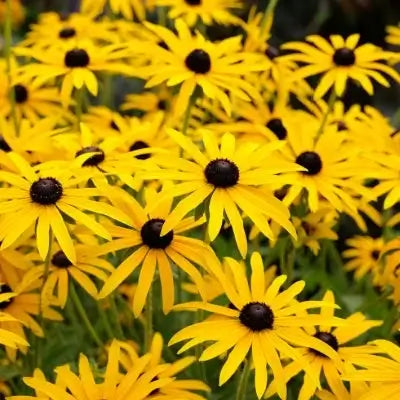
The Power of Clonal Propagation
Share
The Art and Science of Clonal Propagation
Clonal propagation, also known as vegetative propagation, forms a fundamental element of contemporary horticulture and agricultural practices. Growers maintain particular plant characteristics throughout new generations by reproducing plants through existing tissues instead of seeds. Clonal propagation reliably duplicates the genetic identity of a parent plant, whether growers seek uniformity, disease resistance, or improved yields. Through time, multiple clonal propagation methods have been developed that align with specific plant species and cultivation needs. Advancements in technology allow scientists and horticulturalists to improve processes that produce healthier and more predictable crops to meet world demand for food and ornamental plants. Clonal propagation enables plant breeders to control and replicate desirable genetic traits within plants instead of relying on random inheritance.
The method provides multiple benefits compared to standard seed-based sexual reproduction. The offspring from seeds display unpredictable traits because they result from genetic recombination between two parent plants. Clonal propagation enables plants to reproduce their genetic material precisely, maintaining the stability of traits like taste, color, and growth patterns. Farmers and gardeners who need consistent crop production benefit significantly from uniform growth cycles and predictable harvests. The consistent replication from clonal propagation may become dangerous if unknown weaknesses exist in the original plant. Clones with identical genetic makeup may experience the same vulnerabilities to new pests or diseases. The advantages of clonal propagation become more significant than the disadvantages when growers carefully select healthy parent stock and implement thoughtful cultivation practices.
Understanding Clonal Propagation
Our connection to plants has grown from a long-standing practice of clonal propagation. Farmers and horticulturalists have spent centuries cutting vines, dividing rhizomes, and grafting branches while maintaining traditional methods handed down through generations. The core principle remains consistent: The plant’s preferred characteristics can be duplicated by forming genetically identical new plants using its tissue. Traditional plant propagation methods such as stem cuttings, stem layering, and scion grafting onto rootstocks remained the primary tools for cultivators to maintain or improve specific plant characteristics for many years. Scientific advancements in plant hormones and molecular biology enable sophisticated technologies like tissue culture to produce numerous healthy clones in controlled laboratory environments.
Studying the biological processes involved in clonal propagation shows how plants can regenerate from themselves when conditions are appropriate. Meristematic cells in plants sustain their ability to divide and differentiate throughout the entire lifespan of the plant. Meristematic cells at the shoot and root tips can develop into various plant tissues under proper moisture and temperature conditions and correct hormone levels. Growers guide small plant tissue fragments to form roots and shoots, transforming into complete plants when they manipulate critical growth factors. The exceptional ability of plants to regenerate sets them apart from most animals while establishing the fundamental principle behind clonal propagation methods.
Practical Methods and Techniques
Stem cuttings represent a standard clonal propagation method where a stem section or branch segment is set in a growth medium to form new roots. The rooting process becomes more effective when rooting hormones stimulate the beginning stages of root formation. After the stem cutting develops a healthy root system, it becomes ready for transplantation into the soil, where it develops into an independent plant. The traditional layering method directs a stem toward the soil or places it inside a moist substrate container. The stem segment that stays connected to its parent plant develops roots over time, which results in a higher survival probability. After ample roots grow, the plant can be separated from the parent and placed into a pot.
Grafting combines two diverse plants to exploit their advantageous traits. A fruit-bearing variety (scion) is commonly grafted onto a rootstock with strong resistance to soil-borne diseases and environmental stress to improve plant performance. This approach produces plants with high yields while demonstrating superior strength and adaptability. Tissue culture, which is known as micropropagation, represents a new advancement that uses sterile laboratory conditions to grow plants from small tissue samples. Researchers can efficiently produce healthy plants from cells or small tissue samples when they grow them in nutrient gels with added hormones under laboratory conditions. The tissue culture technique has transformed how crops like bananas, strawberries, and ornamental plants are propagated because these plants face challenges from pests or traditional propagation methods.

Applications and Future Prospects
Clonal propagation has become a key method in commercial agriculture to ensure crop uniformity and resilience during worldwide shipping and storage. Banana growers use clonal lines almost exclusively to produce fruits that maintain uniform appearance and flavor in various regions. Clonal propagation maintains specific flavor profiles in wine grapes, which makes famous vintages renowned. Clonal propagation techniques help ornamental plants like roses and orchids produce uniform blooms for distribution among florists and garden lovers. International trade and consumer expectations require flowers, fruits, and vegetables to adhere to strict appearance and quality standards.
Research in clonal propagation is advancing plant breeding limits and cultivation capabilities. Through ongoing refinement of tissue culture protocols, scientists can reduce seed dependency while accelerating improvements for a growing number of species. Genetic engineering and clonal propagation will transform our future food production capabilities. Scientists can produce whole fields of enhanced crops by cloning plants that have been genetically modified with beneficial disease resistance or nutritional value genes. The progress in these technologies requires careful ethical and ecological evaluation to preserve biodiversity and minimize environmental and human health risks.
Clonal propagation may seem limited to big agribusinesses, but it is essential in small-scale farming and gardening hobbies. Gardeners with backyard plots can use cloning techniques to keep their unique heirloom plant varieties alive, even when these plants cannot be found through regular seed suppliers. Exotic plant enthusiasts depend on plant tissue culture to acquire rare species that face disease risks or illegal collection from natural habitats. The specific applications of clonal propagation at a personal level demonstrate its scientific precision while remaining within reach for everyday plant enthusiasts.
Climate change and population growth make the pursuit of dependable and lasting food sources critical. Clonal propagation emerges as a key strategy for achieving this mission. Farmers who increase the production of high-yield plants or those with superior nutritional quality and climate resilience gain better capability to meet environmental challenges. Dependence on one particular clone reduces genetic variety, possibly putting entire crop populations at risk if a new disease appears. Breeders and growers who use clonal methods must focus on achieving genetic diversity and uniformity.
Clonal propagation represents a historical practice while also serving as an indication of agricultural progress. Human creativity merges with the plant regenerative capacity from initial farmers who chose cuttings for future harvests to current scientists who develop tissue culture methods. Clonal propagation presents significant possibilities for shaping plant development in personal gardens and large-scale agricultural operations. Understanding the advantages and constraints of these methods enables cultivators to improve them for future generations to sustain strong harvests and healthy landscapes.













